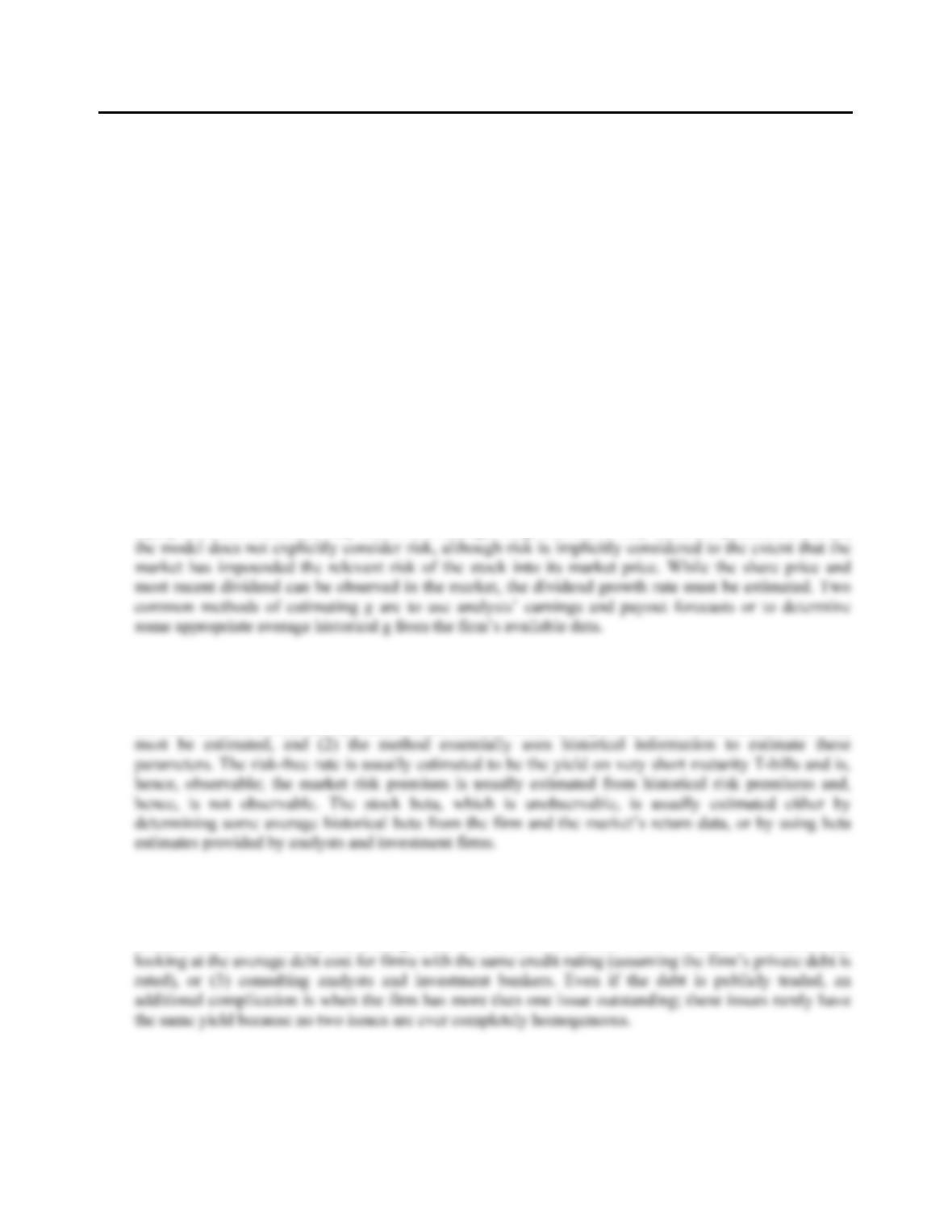B-252 SOLUTIONS
8. a. This only considers the dividend yield component of the required return on equity.
b. This is the current yield only, not the promised yield to maturity. In addition, it is based on the
book value of the liability, and it ignores taxes.
c. Equity is inherently more risky than debt (except, perhaps, in the unusual case where a firm’s
assets have a negative beta). For this reason, the cost of equity exceeds the cost of debt. If taxes are
9. R
Sup = .12 + .75(.08) = .1800 or 18.00%
Both should proceed. The appropriate discount rate does not depend on which company is investing; it
10. If the different operating divisions were in much different risk classes, then separate cost of capital
figures should be used for the different divisions; the use of a single, overall cost of capital would be
inappropriate. If the single hurdle rate were used, riskier divisions would tend to receive more funds for
investment projects, since their return would exceed the hurdle rate despite the fact that they may
Solutions to Questions and Problems
NOTE: All end of chapter problems were solved using a spreadsheet. Many problems require multiple steps.
Due to space and readability constraints, when these intermediate steps are included in this solutions
manual, rounding may appear to have occurred. However, the final answer for each problem is found
without rounding during any step in the problem.
Basic
1. With the information given, we can find the cost of equity using the dividend growth model. Using this
model, the cost of equity is:
R
E = [$2.40(1.055)/$52] + .055 = .1037 or 10.37%
2. Here we have information to calculate the cost of equity using the CAPM. The cost of equity is:
RE = .053 + 1.05(.12 – .053) = .1234 or 12.34%
3. We have the information available to calculate the cost of equity using the CAPM and the dividend
growth model. Using the CAPM, we find:
RE = .05 + 0.85(.08) = .1180 or 11.80%



